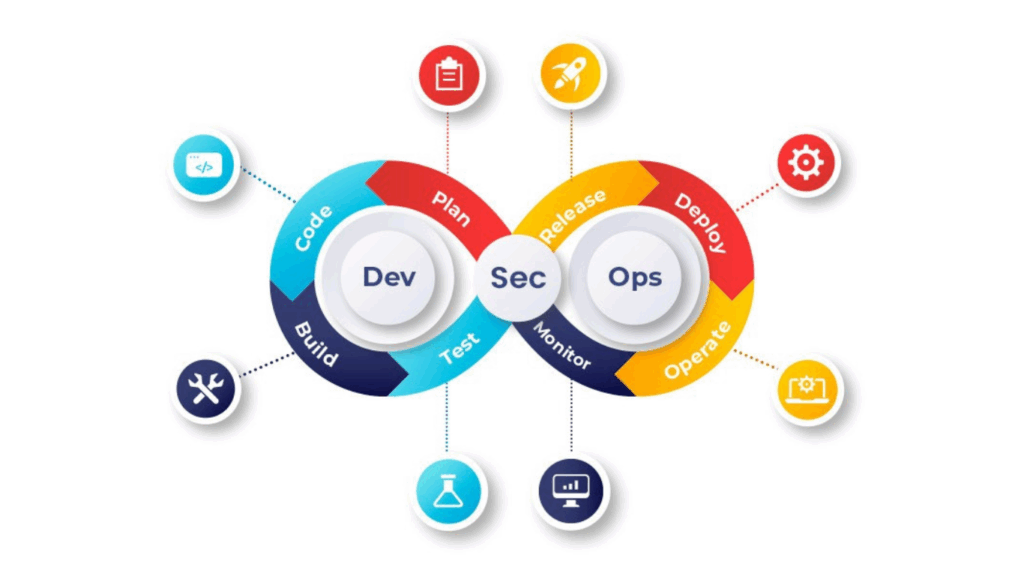The maintainability testing consists the following attributes
- Analysability: It identifies the defects along with the identification of part of the system which needs to be changed.
- Changeability: It estimates the ability of software to undergo changes.
- Stability: It estimates the capability to remain stable after modification.
- Testability: The inherent characteristic of software is tested to determine the testing of updated system.
- Maintainability compliance: This does the evaluation of five above mentioned attributes.
How maintainability testing is done?
There are two ways in which maintainability testing is carried out
- Static testing: It maintains the structure, complexities and other traits of the source code with the examination of documentation part of the software development process. It has following activities like
- Inspection
- Reviews
- Walkthroughs
- Dynamic testing: it has following testing methodologies which concentrates on identification of defects to prevent the unexpected failure of the software that are:
Functional testing
Non-Functional testing
A type of non functional testing that confirms the ability to accept the changes after modification. The maintainability testing and maintenance testing are two different testing types. The maintainability testing is effective for the future maintenance of the software or system. Maintenance testing is testing the software that has been modified.
Questions:
- What is maintainability testing?
- What are the advantages of maintainability testing?






























22 Responses
(1) What is maintainability testing?
Maintainability testing is the ability of the software to easily undergo changes, up date in order to meet clients’ requirements.
(2) What are the advantages of maintainability testing?
1. To ensure ability of system’s software to undergo changes
2. Guarantees software’s efficiency to undergo frequently changing requirements of clients
What are the advantages of maintainability testing?
1. To ensure ability of system’s software to undergo changes
2. Guarantees software’s efficiency to undergo frequently changing requirements of clients
3. Effective for future maintenance of costs
Maintainability testing 2: A type of nonfunctional testing that confirms the ability to accept the changes after modification. Maintainability testing is effective for the future maintenance of the software or system.
Advantages:
1. It maintains the structure, complexities and other traits of the source code with the examination of documentation
2. It concentrates on the identification of defects to prevent the unexpected failure of the software that is functional and nonfunctional.
3. It estimates the ability of software to undergo changes.
4. It estimates the capability to remain stable after modification.
5.inherent characteristics of the software is tested to determine the testing of the updated system.
Maintainability testing is the process of testing the system’s ability to update, modify the application if required. The software is expected to undergo several changes to fix defects, add new functionalities, modify the existing functionalities and changes in non functional characteristics of software.
Advantages of Maintainability testing:
-it identifies the defects
-ability to reduce future maintenance costs
-it estimates the capability to remain stable after modification
-it estimates the ability of the software to undergo changes
The maintainability testing consists the following attributes
Analysability: It identifies the defects along with the identification of part of the system which needs to be changed.
Changeability: It estimates the ability of software to undergo changes.
Stability: It estimates the capability to remain stable after modification.
Testability: The inherent characteristic of software is tested to determine the testing of updated system.
Maintainability compliance: This does the evaluation of five above mentioned attributes.
Maintainability testing : A type of nonfunctional testing that confirms the ability to accept the changes after modification. Maintainability testing is effective for the future maintenance of the software or system.
(2) Advantage of Maintainability Test
a. Identify defects and the part of software that need to be changed.
b. It helps to estimate the ability of software to undergo all changing
c. Keep software updated and stay stable
d. Save cost for the future maintenance
Maintainability testing is the process of testing the system’s ability to update, modify the application if required. The software is expected to undergo several changes to fix defects, add new functionalities, modify the existing functionalities and changes in non functional characteristics of software.
Advantages of Maintainability testing:
it identifies the defects
ability to reduce future maintenance costs
it estimates the capability to remain stable after modification
it estimates the ability of the software to undergo changes
Maintainability testing to test the ability of a software to modify and change whenever it required. It is very important because in software development life cycle the application undergoes lot of changes due to defect fixing, adding new functionalities, modifying existing functionalities, adding non functionalities.
Main advantage is reduces the future maintenance cost
Maintainability testing is the process of testing the system’s ability to update, modify the application if required. The software is expected to undergo several changes to fix defects, add new functionalities, modify the existing functionalities and changes in non functional characteristics of software.
Advantages of Maintainability testing:
-it identifies the defects
-ability to reduce future maintenance costs
-it estimates the capability to remain stable after modification
-it estimates the ability of the software to undergo changes
It is the process of testing the system’s ability to update, modify the application if required.
The system is subjected to undergo a lot of changes once deployed to production.
the s/w is expected to undergo several changes
-to fix defects
-add new functionalities
-modify the existing functionalities
-changes in non functional characteristics of s/w.
Advantages of Maintainability testing:
-it identifies the defects
-ability to reduce future maintenance costs
-it estimates the capability to remain stable after modification
-it estimates the ability of the software to undergo changes
1) The term maintainability corresponds to the ability to update or modify the system under test. This is a very important parameter as the system is subjected to changes throughout the software life cycle. To make Maintainability Testing more effective, testers should include static analysis and reviews as these are hard to spot during dynamic testing while it is easily captured in code walkthrough and inspection.
2) Characteristics of MT:
Verifying the development standards such as structured programming, standards for database approach, recognizable nomenclature and standards for the user interfaces
Verify if the data processing split up into sub transactions
Verify if the input, the processing and the output have been implemented separately
Verify if the programs have been parameterized under necessary conditions to promote reusability.
Verify if the systems are distributed.
Verify if the algorithms are optimized.
System is subjected to change through life cycle of software. Maintainability testing ensures systems ability to update modify the application where its needed.
Advantages :
reduces future maintenance costs.
errors are fixed as soon as it is identified.
1. Maintainability testing is the process of testing the system’s ability to update, modify the application if required.
2. The advantages of maintainability testing include that it can test the system’s ability to standard changes throughout its life cycle. Because technology is changing all the time, this is crucial. Moreover, this will lead to the production of a much better product with fewer bugs. Also, this can save time in the future as maintenance costs and risk of failure will fall significantly because they have already been accounted for early in the testing process.
Maintainability testing is how easy it is to analyze, change and test the application or product. It is not about fixing wear and tear. Software is not physical, and therefore it does not degrade by itself the way physical things do. Yet most software systems are modified all the time after they have been delivered. This is what software maintenance is about. Four types of software maintenance can be distinguished:
– Corrective maintenance:- Bugs are discovered and have to be fixed.
– Adaptive maintenance:- The system has to be adapted to changes in the environment in which it operates—for example, upgrades of the operating system or technologies
– Perfective maintenance:- Users of the system (and/or other stakeholders) have new or changed requirements
– Preventive maintenance:- Ways are identified to increase quality or prevent future bugs from occurring
Characteristics:-
– Fix a bug, without introducing a new bug as you do so
– Add new features, without introducing bugs as you do so
– Improve usability
– Increase performance
– Make a fix that prevents a bug from occurring in future
– Make changes to support new environments, operating systems or tools
Maintainability testing is the process of testing the system’s ability to update, modify the application if required
Advantages of maintainability testing:
Analysability: It identifies the defects along with the identification of part of the system which needs to be changed.
Changeability: It estimates the ability of software to undergo changes.
Stability: It estimates the capability to remain stable after modification.
Testability: The inherent characteristic of software is tested to determine the testing of updated system.
Maintainability compliance: This does the evaluation of five above mentioned attributes.
1.Maintainbility testing is the process of testing the systems ability to update ,modify the application if required & its a very important as the system subjected to changes all through the software life cycle
2.The advantages of maintainability testing is
Corrective maintenance: In this test, the system is measured to diagnose and fix the problems as soon as it is identified.
Perfective maintenance: in this test, the system is measured in terms of time taken to make the effort for enhancements.
Adaptive maintenance: This test is used to for adapting the changes in the environment. The effort required to make the adaptations required by the system.
Preventive maintenance: This test refers to reduce the future maintenance costs.
1.)Maintainability Testing is a process of testing the system’s ability to update and modify the application if required. Once the system is deployed to production environment, the software is expeted to undergo several changes like:
->Fix the defects
->Add new functionalities
->Modify the existing functionalities
-> Changes in non-functional characteristics of the software
2.)Advantages of Maintainability Testing:
->Identifies the defects along with the identification of part of the system that needs to be changed
->Estimates the ability of the software to undergo changes
->Estimates the capability to remain stable after modification
->ability to reduce future maintenance costs
->Inherent characteristics of the software is tested to determine the testing of updated system
Maintainability testing is the process of testing the system’s ability to update, modify the application if required.
The maintainability testing advantages:
Analyzability: identifies the defects along with the identification of part of the system which needs to be changed.
Changeability: estimates the ability of software to undergo changes.
Stability: estimates the capability to remain stable after modification.
Testability: The inherent characteristic of software is tested to determine the testing of updated system.
Maintainability compliance: This does the evaluation of five above mentioned attributes.
Maintainability testing is the type of testing done to how how able a system is to change or modify itself if necessary because in the real environment, the software is subject to various changes.
Changeability: this is the ability of the software to undergo changes
Tetsability: This is the ability of the software to be testable.
Analysability: the ability for the software to able to be analysed or finding defects without being changed.
Maintainability compliance: The software should be compliant pass all stages
1. What is maintainability testing?
Maintainability testing is the process of testing the system’s ability to update, modify the application if required.
2. What are the advantages of maintainability testing?
Verifying the development standards such as structured programming, standards for database approach, recognizable
nomenclature and standards for the user interfaces and ability to reduce future maintenance costs.
Maintainability Testing:
• Defines the defects
• Estimates the capability
• Determined the testing of updated system.
• Two ways of doing it static and dynamic